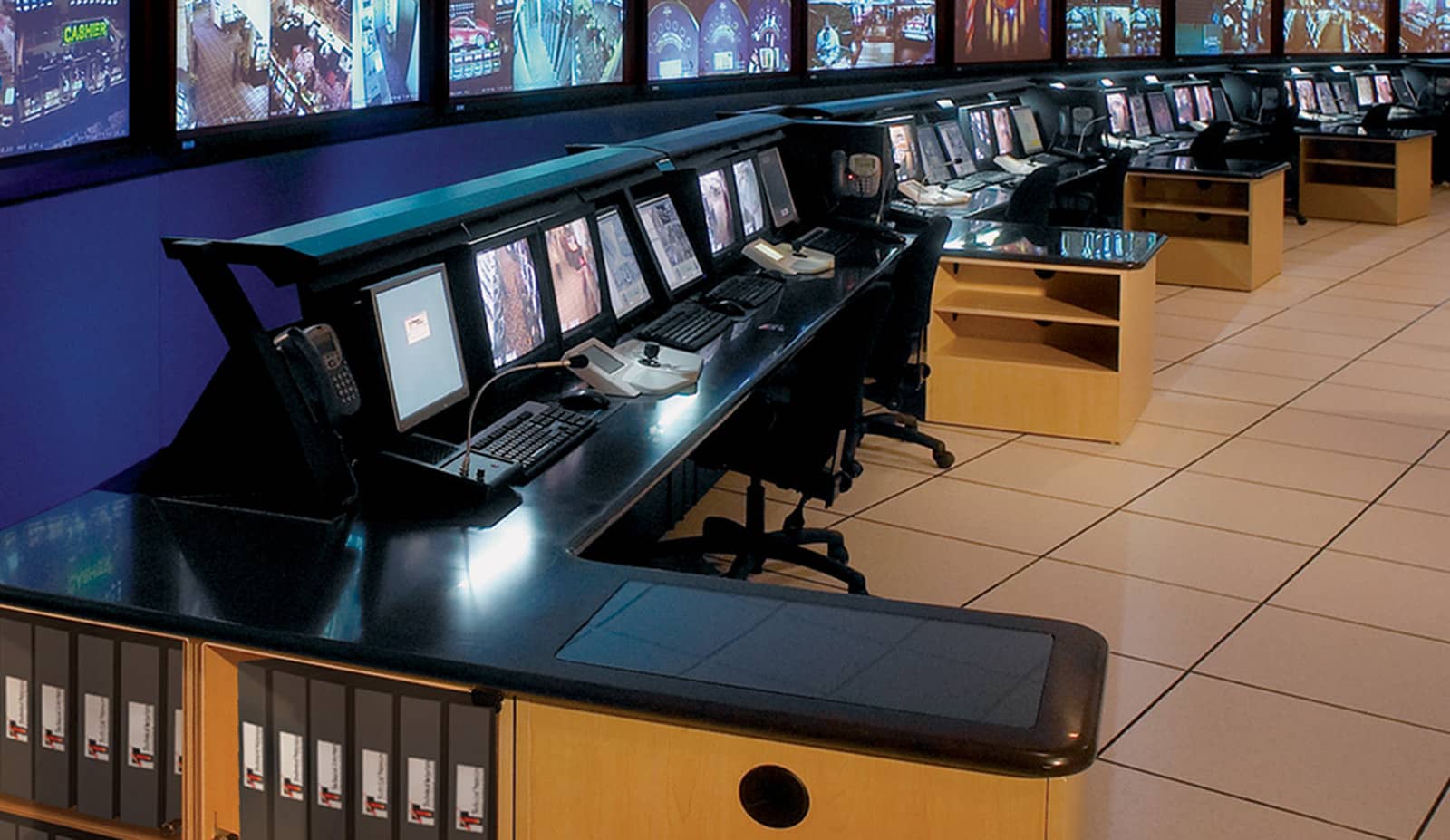
MYSTIC LAKE SURVEILLANCE UPGRADE
When it became a federally recognized tribe, the Shakopee Mdewakanton Sioux Community (SMSC) gained the right of self-determination and self-sufficiency. Most importantly, it gained the right to the dignity that comes with sovereignty. For that reason, SMSC bears a burden of responsibility when it comes to protecting the patrons at its casinos and the assets those gaming facilities bring to the tribe. That was the thinking behind SMSC’s recent renovation of the video surveillance and access control system serving its Mystic Lake Casino Hotel and Little Six Casino facilities in Prior Lake, Minn.
“Integrity is the lifeblood of a gaming facility such as ours,” says Scott Scepaniak, corporate compliance officer for the SMSC Gaming Enterprise, which oversees gaming operations at the two facilities. “If we expect our patrons to maintain confidence in our games, we need to maintain the highest possible standards. By protecting our customers and our owners — the tribal community — we protect our reputation and our future.”
On the side of security was community management that was receptive to do whatever it took to get the job done, regardless of cost. While the scope of the project ahead seemed daunting, advance planning proved to be a huge advantage when it came to challenges that arose during the installation. The end result marks a new era in how Mystic Lake protects its patrons and the reputation of SMSC.
Sovereignty puts more responsibility on security When the federal government formally recognized SMSC as an Indian tribe under federal reservation status in 1969, it marked the beginning of a new era. The Minnesota and Mississippi River Valleys had been home to the Dakota Indians for centuries, but it had been a history filled with conflicts and broken treaties.
In 1982, Tribal Chairman Norman Crooks brought Indian gaming to Minnesota with the opening of the Little Six High Stakes bingo parlor. After the passage of the Indian Gaming Regulatory Act (IGRA), Little Six expanded in 1988 with slot machines and black-jack, becoming Little Six Casino. Four years later, a second casino complex was opened roughly a mile down the road named Mystic Lake. The “Mdewakanton” portion of the tribal name translates to “Dwellers of Spirit Lake” or “Mystic Lake.” The facility has grown to include 4,250 slot machines,100 blackjack tables, 600 hotel rooms, five restaurants, a star-caliber showroom and the high-stakes bingo that gave the place its start.
Self-sufficiency was not easy and the tribe takes its sovereignty, and its security, seriously. What had started out as a state-of-the-art video security system when the facility was built was starting to show its age. Richard Thake, director of surveillance, and James Arsenault, surveillance technical supervisor, had long been tasked with running the day-to-day video surveillance operations. The two had been evaluating digital video systems since 1999 and saw first-hand the tremendous increases in video quality, reliability and operational features.
“Our surveillance control room needed to be relocated to make room for expansion of the employee dining area. With the added features that a digital system would provide, we felt we had a compelling story to take to the board of directors.” Thake explains.
The determination to invest the resources for a state-of-the-art digital system is consistent with the commitment and emphasis on regulatory compliance by the community and Gaming Enterprise. This is illustrated by the dedicated staffing of nearly 300 team members within the departments of surveillance, security and internal audit that are responsible for the operations that provide for the security of assets, game protection and the safety and welfare of patrons and team members.
In addition to the internal regulatory efforts, the community maintains an independent gaming commission with a staff of 30 regulators that oversees compliance with the regulations and minimum internal control standards that govern the operation of the two gaming properties.
The expanded scope of the work began to take shape. There would be two command centers — one for security and one for surveillance — but these would now function more like operation centers, tying in cameras from around the community. These included cameras from the three parking garages
One element of the system design that was not left to chance was the selection of the rack and console manufacturer: Minneapolis-based Winsted. The company was headquartered a few miles away from Mystic Lake and had been working with the facility since the first system was installed. Winsted had already worked with me to provide 3D renderings of the new control room, allowing Mystic Lake to see its control room and the final product before it was even built. “Winsted has always been part of our family, willing to change or enhance their products for our application,” explains Thake.





